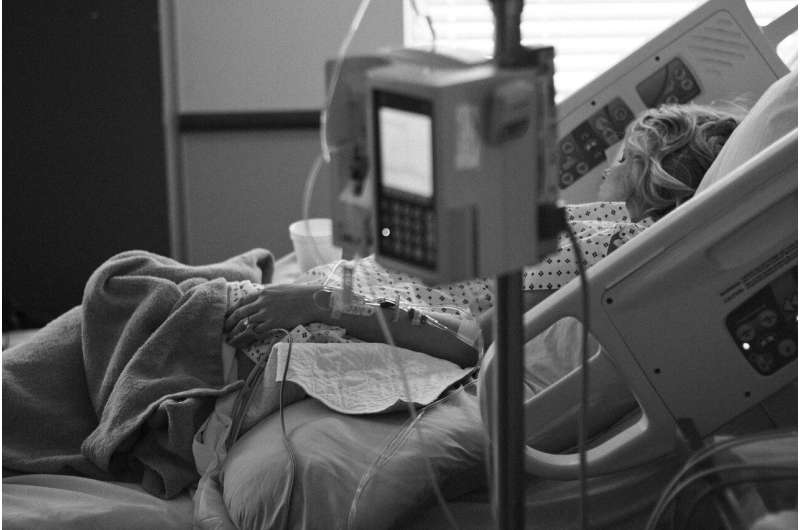This article has been reviewed according to Science X's editorial process and policies. Editors have highlighted the following attributes while ensuring the content's credibility:
fact-checked
proofread
To eliminate COVID-era bloodstream infections in heart and lung patients, a hospital had to innovate

Recognizing an unusual prevalence of bloodstream infections (BSI) that threatened extremely ill patients receiving extracorporeal membrane oxygenation, or ECMO, Tampa General Hospital (TGH) infection preventionists started an intervention that eliminated these infections completely from their 18-bed Cardiothoracic Intensive Care Unit (CTICU).
At the APIC 2024 Annual Conference, presenters from the 1,000-bed, tertiary care, academic medical system reported on how they reduced bloodstream infections in ECMO patients from a rate of 36% in October 2021 to a rate of 0% in April 2022. This rate was sustained for seven months. TGH has continued to maintain low BSI rates in this population and are again on a four-month streak of no infections.
At the time of the peak BSI rates, the unit was filled with critically-ill COVID patients from surrounding regions who needed ECMO treatment and were transferred from other hospitals.
Led by a multidisciplinary team, TGH formed an ECMO task force to identify factors contributing to these infections. Among the things they identified was a lack of standardized infection prevention procedures around the care and maintenance of cannula sites and environmental factors.
ECMO involves insertion of large cannulas or tubes into the patient, often near the groin, so blood can be pumped out of the body, reoxygenated, and pumped back in. ECMO patients are prone to bleeding and require multiple dressing changes which can increase the chances of infection. Because ECMO is such a high-risk procedure for patients with severe heart and lung impairments, infections can lead to organ failure and death. It is believed that between 3% and 18% of ECMO patients get a bloodstream infection during treatment.
Starting from a pre-existing set of practices for prevention of central line-associated bloodstream infections (CLABSI), the TGH team added specific elements for ECMO to create an ECMO-specific cannula site care bundle.
The ECMO line-related infection prevention bundle focused on standardizing use of antimicrobial dressings, aseptic techniques, cannula securement, daily antimicrobial patient bathing, and environmental factors like making sure cannulas did not touch the floor.
Mini Radhakrishnan, BSN, RN, CIC, is an Infection Preventionist at Tampa General Hospital and helped to identify the initial trend in the CTICU. She was part of the team that conducted weekly infection prevention rounds on the unit and tracked adherence to the bundle with an audit tool. In June 2022, just eight months later, there were zero ECMO-related BSIs.
"As there were no standardized procedures for ECMO infection prevention, we borrowed heavily from what we know about surveillance and CLABSI prevention and implemented procedures that would work," said Radhakrishnan.
"So much credit for our success goes to the CTICU team. When they identified the problem and saw how their actions could change outcomes for patients, that's when the effort really took off."
Unlike CLABSIs, BSIs that occur during ECMO procedures are not tracked by the National Healthcare Safety Network (NHSN) and can often be missed when doing routine infection surveillance.
"Because ECMO line-related infections aren't specifically tracked through NHSN, it would be easy for infection prevention teams to overlook a potential problem," said Tania Bubb, Ph.D., RN, CIC, FAPIC, 2024 APIC president.
"The TGH team is to be congratulated for not only identifying the infections in this population but also for proactively developing a set of ECMO infection prevention protocols that can be replicated by other institutions that utilize the procedure in their cardiothoracic units."
More information: The oral abstract, "Bundled Approach to Reduce Bloodstream infections in Patients Requiring use of Extracorporeal Membrane Oxygenation," (QAPI 20) is presented June 3, at the APIC Annual Conference in San Antonio, Texas.



















